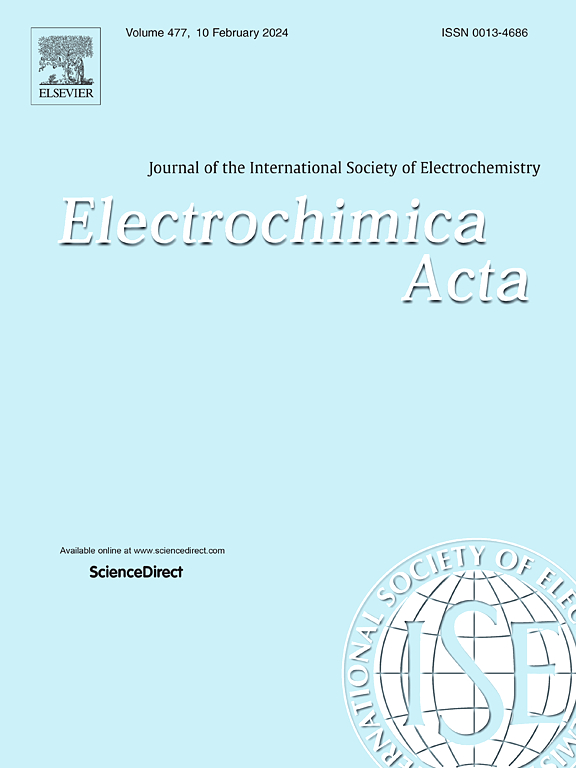自下而上电沉积填充纳米级硅通孔(tsv)的研究
IF 5.6
3区 材料科学
Q1 ELECTROCHEMISTRY
引用次数: 0
摘要
背面输电网络(BSPDN)通过硅通孔(TSV)将背面金属布线连接到正面埋轨,以减少信号干扰并提高效率,但随着TSV尺寸缩小到纳米级,其电沉积填充面临挑战。在纳米尺度上,电沉积对TSV的超填充越来越受到长宽比和直径的限制,导致填充缺陷和低良率问题。这项工作介绍的模块集成了四步预润湿过程和优化的电镀溶液添加剂选择。利用该工艺,我们成功地制备了长宽比为10:1、总直径为1μm(电镀钴填充直径为750 nm)的钴tsv阵列。有限元仿真方法验证了四步预润湿法的有效性。含有对胺(亚胺)基团的添加剂可以减缓电镀过程中的沉积动力学,改变阴极表面钴离子的沉积速率。在这项工作中介绍的制造模块对于实现小尺寸tsv的无空隙超级填充至关重要,特别是在纳米尺度上,精确控制沉积动力学对于最小化缺陷至关重要。本文章由计算机程序翻译,如有差异,请以英文原文为准。


Investigation of bottom-up electrodeposition filling for nanoscale through-silicon vias (TSVs)
The backside power delivery network (BSPDN), which connects backside metal wiring to frontside buried rails via through-silicon vias (TSVs) to reduce signal interference and improve efficiency, faces challenges in electrodeposition filling as TSV dimensions shrink to the nanoscale. At the nanoscale, the super filling of TSV via electrodeposition becomes increasingly constrained by the aspect ratio and diameter, leading to filling defects and low yield issues. This work introduces modules that integrate a four-step pre-wetting process with optimized additive selection for plating solutions. Using this process, we successfully fabricated an array of cobalt TSVs with an aspect ratio of 10:1 and an overall diameter of 1 μm (Electroplating cobalt filling with a diameter of 750 nm). Finite element simulation methods have confirmed the effectiveness of the four-step pre-wetting method. Additives containing paired amine (imine) groups can slow down the deposition kinetics during electroplating, altering the cobalt ion deposition rate on the cathode surface. The fabrication modules introduced in this work are essential for achieving void-free super filling in small-sized TSVs, especially at the nanoscale, where precise control over deposition dynamics is important to minimize defects.
求助全文
通过发布文献求助,成功后即可免费获取论文全文。
去求助
来源期刊

Electrochimica Acta
工程技术-电化学
CiteScore
11.30
自引率
6.10%
发文量
1634
审稿时长
41 days
期刊介绍:
Electrochimica Acta is an international journal. It is intended for the publication of both original work and reviews in the field of electrochemistry. Electrochemistry should be interpreted to mean any of the research fields covered by the Divisions of the International Society of Electrochemistry listed below, as well as emerging scientific domains covered by ISE New Topics Committee.
 求助内容:
求助内容: 应助结果提醒方式:
应助结果提醒方式:


